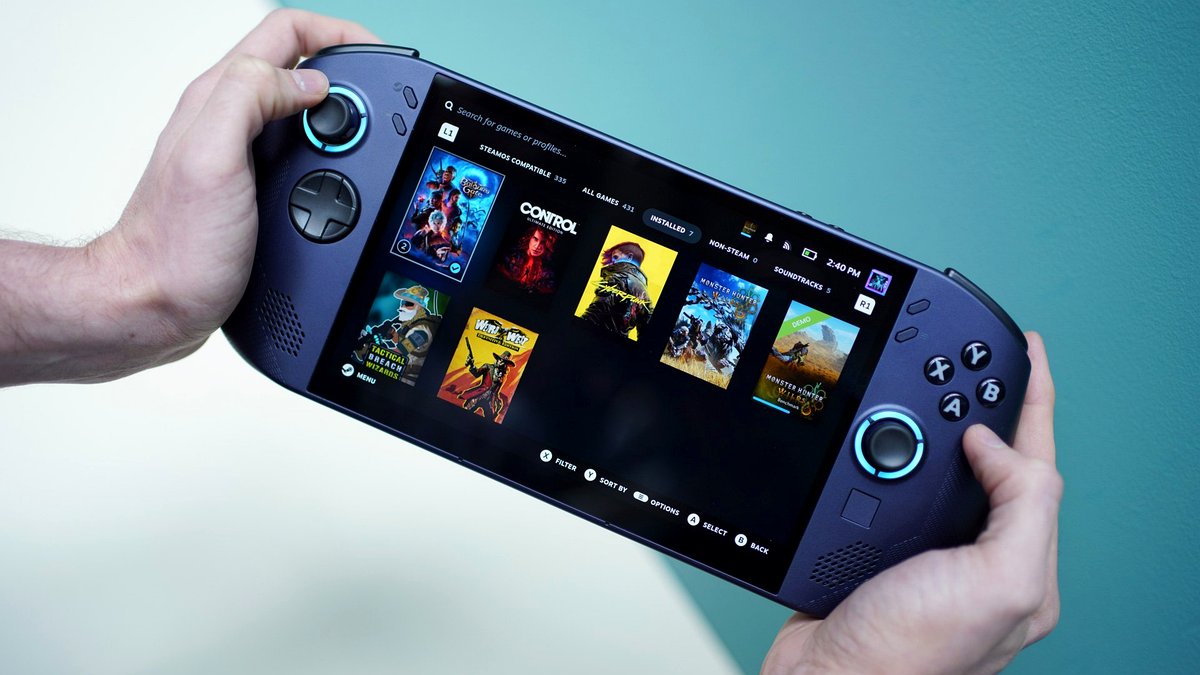The x86 handheld gaming market is experiencing a fundamental realignment as Lenovo's Legion Go S with SteamOS emerges as what reviewers call "the only real alternative to Steam Deck," while simultaneously, premium devices push toward $1,000 price points and last-generation hardware floods discount channels at unprecedented prices.
The Middle Ground Strategy
At $600, the Legion Go S with SteamOS occupies a strategic middle position that illuminates the market's evolution. The device's reception reveals that operating system choice has become as critical as hardware specifications in determining value. Where the Windows-based Legion Go S launched earlier this year at $730 to lukewarm reception, the SteamOS variant at a lower price point has garnered enthusiastic reviews specifically for its software experience.
This positioning becomes more significant when contrasted with current market dynamics. While ASUS ROG Ally Z1 Extreme units appear on secondary markets for as low as $387.99 in open-box condition—a 22% discount from the $499.99 retail price—new releases from MSI push boundaries in the opposite direction, with the Claw 8 AI+ reaching $999 after a recent price increase.
Price-Performance Disconnect
The market's pricing structure reveals a growing disconnect between performance improvements and cost increases. While newer handhelds offer marginally better performance than previous generations, their price premiums far exceed the performance gains. The MSI Claw A8, utilizing AMD's Ryzen Z2 Extreme processor, approaches the same $899 price point as the Intel-based Claw 8 AI+ despite early benchmarks suggesting comparable or slightly lower performance.
This pricing inflation extends beyond MSI. The ASUS ROG Ally X has seen its price increase from $799.99 to $899 at major retailers, while Lenovo's own Legion Go S Z1 Extreme model lists at $829.99—nearly 40% more than the SteamOS variant despite sharing the same form factor.
SteamOS as Market Differentiator
The Legion Go S's market reception demonstrates that SteamOS has evolved from a Steam Deck exclusive to a legitimate differentiating factor in the broader handheld market. Performance testing shows the Z2 Go processor in the SteamOS model achieving 10fps improvements over identical hardware running Windows, with Cyberpunk 2077 benchmarks jumping from 27fps to nearly 40fps at 1200p resolution.
This software advantage, combined with aggressive pricing on the secondary market for Windows-based devices, suggests consumers are voting with their wallets for either the affordability of discounted last-generation hardware or the superior user experience of SteamOS—leaving premium Windows handhelds in an increasingly narrow market position.
Market Implications
The emerging pattern indicates a three-tier market structure: budget-conscious consumers gravitating toward discounted previous-generation devices, enthusiasts choosing SteamOS-powered options for optimal price-to-experience ratios, and a shrinking premium segment where manufacturers struggle to justify near-$1,000 price points.
As the ROG Xbox Ally approaches its rumored August preorder window with expected pricing between $800-$1,000, the market's response to the Legion Go S suggests that success in the x86 handheld space increasingly depends on either matching Valve's affordability template or offering compelling software experiences that justify premium pricing. The current trajectory, where mainstream manufacturers push prices higher while performance gains remain incremental, risks returning handheld PC gaming to its pre-Steam Deck niche status.
Sources
- Gizmodo: "Lenovo's Legion Go S With SteamOS Is the Only Real Alternative to a Steam Deck by Kyle Barr"
- TechRadar: "Handheld PC makers are slowly losing touch with Valve's successful Steam Deck template of affordability, and that's very concerning by Isaiah Williams"
- Wario64 (BlueSky): "ASUS ROG Ally 7" Z1 Extreme 512GB pricing alert by Wario64"
Note: All sources have been verified for accuracy and editorial standards compliance.
